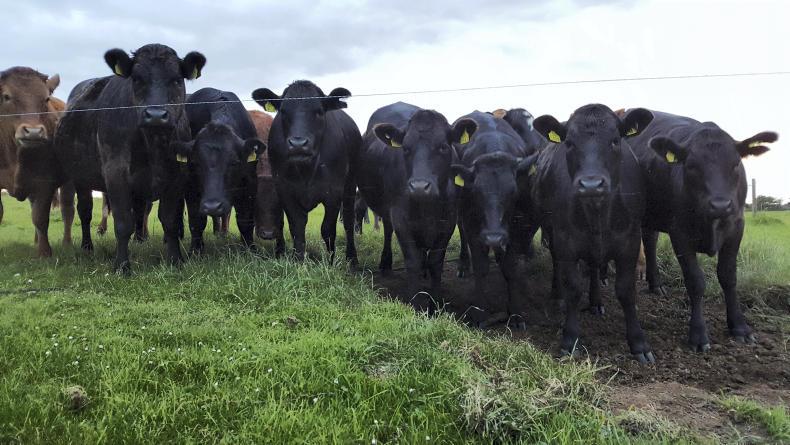By all accounts,
Moorepark 2017, Teagasc’s dairy open day was a great success. With reported crowds of up to 15,000 and the Twitter #Moorepark17 the top trending item in Ireland on Tuesday, there is huge interest and positivity towards the dairy industry.How does this compare with the suckler industry?
By all accounts, Moorepark 2017, Teagasc’s dairy open day was a great success. With reported crowds of up to 15,000 and the Twitter #Moorepark17 the top trending item in Ireland on Tuesday, there is huge interest and positivity towards the dairy industry.
How does this compare with the suckler industry?
Poor margins and low incomes very often lead to negativity towards suckler and beef farming. At many of the farm walks I visit, including the latest Irish Grassland Association beef farm walk, I hear comments like “are you buying into all this?” and “'tis fine for him with his Single Farm Payment and good land.”
Grass potential
At the same conference, it was pointed out that farmers in the west can grow as much grass as anywhere in the country. By improving soil fertility, grazing infrastructure and grassland management skills, there is the possibility to increase vastly the amount of grass grown on many suckler and beef farms.
Taking steps to improve animal performance and efficiency within the herd, using increased grass production, has the potential to greatly increase margins and overall farm income. Calving interval, age at first calving, mortality, empty cows and average daily gains are all areas that we can work on.
The latest figures for the above suckler traits within herds are available on ICBF.com and show the national herd calving interval at 400 days. Calves per cow per year is 0.83 and is still a long way short of a calf per cow per year.
Things like grass measuring are a foreign language and here is where there is an opportunity to change things quickly
So how do we in the suckler and beef industry change our ways to improve our lot? Number one must be education. I suggest that many livestock farmers have no formal agricultural education. Things like grass measuring are a foreign language and here is where there is an opportunity to change things quickly.
 The co-ops in the west and northwest have many more livestock customers than dairy customers in their agri stores. Contrary to some reports, there does not appear to be any great desire in the northwest to take up dairying. Therefore, I suggest that the western co-ops expand their farm programmes to include beef farmers and organise grass pod discussion groups among those interested.
The co-ops in the west and northwest have many more livestock customers than dairy customers in their agri stores. Contrary to some reports, there does not appear to be any great desire in the northwest to take up dairying. Therefore, I suggest that the western co-ops expand their farm programmes to include beef farmers and organise grass pod discussion groups among those interested.
Opportunity from dairy calves
This can be mutually beneficial to both the livestock and dairy industry. Dairy cow numbers are expanding to almost 1.5m cows, meaning an extra 400,000 calves from the dairy herd compared to the pre-quota era. These extra beef and bull calves need a home where they can be raised in a beef system.
Opportunity knocks for some, but only in an efficient system. Calf price, health, daily liveweight gains and grassland management all need attention and top levels of control and management.
Whether it is traditional suckling or calf to beef, only with improved skills and management will there be a conversion from negativity to positivity in livestock farming. Education and training can be the key to this.
Read more
IGA Beef Forum: Is bull beef sustainable?
IGA Beef: Out of date carcase grading and the dairy switch





SHARING OPTIONS: